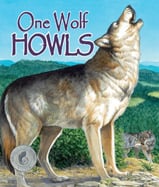Alignment to Standards for VA

| Grade | Number | Standard |
|---|---|---|
| 1 | MA-1.3 | count forward by ones, fives, and tens to 100, by twos to 20, and backward by ones from 20. |
| 1 | SC-1.5b | animal characteristics:body coverings, body shape, appendages, and methods of movement) |
| 1 | SC-1.5c | animal characteristics. Key concepts include other characteristics (wild/tame, water homes/land homes). |
| 1 | SC-1.7a | Seasonal changes: Key concepts include how temperature, light, and precipitation bring about changes in plants (growth, budding, falling leaves, and wilting); |
| 1 | SC-1.7b | Seasonal changes: Key concepts include how temperature, light, and precipitation bring about changes in animals (behaviors, hibernation, migration, body covering, and habitat); and |
| 1 | SC-1.7c | Seasonal changes: Key concepts include how temperature, light, and precipitation bring about changes in people (dress, recreation, and work). |
| 2 | MA-2.18a) | use calendar language appropriately (e.g., months, today, yesterday, next week, last week); |
| 2 | SC-2.4a | plant and animal life cycles. Key concepts include some animals (frogs and butterflies) undergo distinct stages during their lives, while others generally resemble their parents; and |
| 2 | SC-2.5a | living things are part of a system. Key concepts include living organisms are interdependent with their living and nonliving surroundings; and |
| 2 | SC-2.5b | living things are part of a system. Key concepts include habitats change over time due to many influences. |
| 2 | SC-2.6a | weather. Key concepts include temperature, wind, precipitation, drought, flood, and storms; and |
| 2 | SC-2.7a | Seasonal changes: Key concepts include effects on growth and behavior of living things (migration, hibernation, camouflage, adaptation, dormancy); and |
| 3 | SC-3.10b | survival of species. Key concepts include the effects of human activity on the quality of air, water, and habitat; |
| 3 | SC-3.4a | animal adaptations: methods of gathering and storing food, finding shelter, defending themselves, and rearing young; |
| 3 | SC-3.4b | animal adaptations: hibernation, migration, camouflage, mimicry, instinct, and learned behavior. |
| 3 | SC-3.5b | food chains. Key concepts include herbivore, carnivore, omnivore |
| 3 | SC-3.5c | food chains. Key concepts include predator and prey. |
| 3 | SC-3.8a | Key concepts include patterns of natural events (day and night, seasonal changes, phases of the moon, and tides); and |
| 3 | SC-3.8b | Key concepts include animal and plant life cycles. |
| 4 | SC-4.5e | Key concepts include life cycles |
| 4 | SC-4.5f | Key concepts include influence of human activity on ecosystems. |
| 4 | SC-4.6b | Key concepts include weather phenomena (fronts, clouds, and storms). |
| 5 | SC-5.7f | Earth surface constantly changes. Key concepts include human impact |
| K | MA-K.2a) | tell how many are in the set by counting the number of items orally; |
| K | MA-K.2b) | select the corresponding numeral from a given set; and |
| K | MA-K1 | The student, given two sets containing 10 or fewer concrete items, will identify and describe one set as having more, fewer, or the same number of members as the other set, using the concept of one-to-one correspondence. |
| K | SC-K.6b | basic needs plants and animals. Key concepts include plants and animals live and die (go through a life cycle); and |
| K | SC-K.6c | Key concepts include offspring of plants and animals are similar but not identical to their parents and to one another. |
| K | SC-K.8a | simple patterns in daily life. Key concepts include weather observations; |
| K | SC-K.8c | simple patterns in daily life. Key concepts include animal and plant growth |